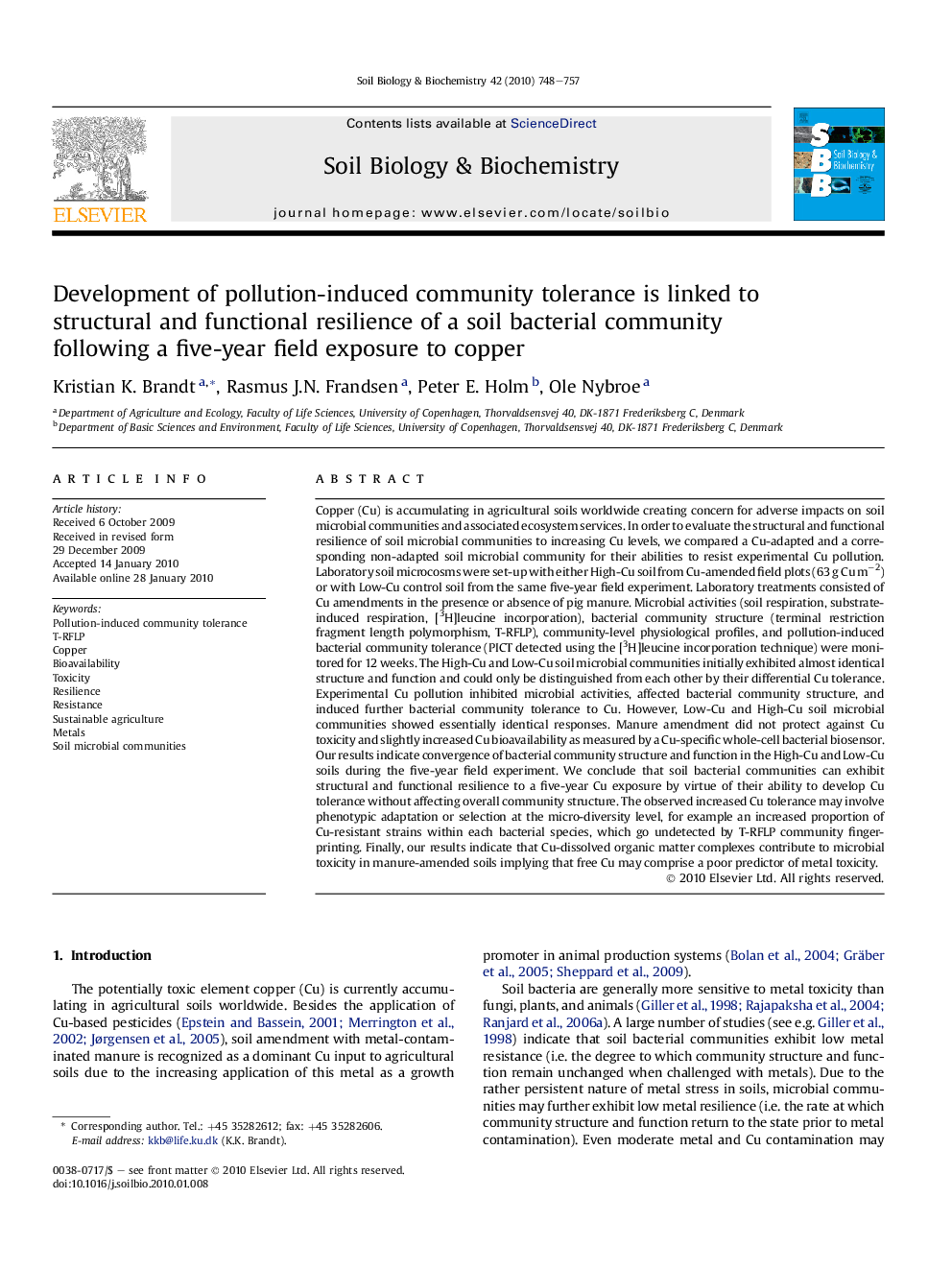| Article ID | Journal | Published Year | Pages | File Type |
|---|---|---|---|---|
| 2024962 | Soil Biology and Biochemistry | 2010 | 10 Pages |
Copper (Cu) is accumulating in agricultural soils worldwide creating concern for adverse impacts on soil microbial communities and associated ecosystem services. In order to evaluate the structural and functional resilience of soil microbial communities to increasing Cu levels, we compared a Cu-adapted and a corresponding non-adapted soil microbial community for their abilities to resist experimental Cu pollution. Laboratory soil microcosms were set-up with either High-Cu soil from Cu-amended field plots (63 g Cu m−2) or with Low-Cu control soil from the same five-year field experiment. Laboratory treatments consisted of Cu amendments in the presence or absence of pig manure. Microbial activities (soil respiration, substrate-induced respiration, [3H]leucine incorporation), bacterial community structure (terminal restriction fragment length polymorphism, T-RFLP), community-level physiological profiles, and pollution-induced bacterial community tolerance (PICT detected using the [3H]leucine incorporation technique) were monitored for 12 weeks. The High-Cu and Low-Cu soil microbial communities initially exhibited almost identical structure and function and could only be distinguished from each other by their differential Cu tolerance. Experimental Cu pollution inhibited microbial activities, affected bacterial community structure, and induced further bacterial community tolerance to Cu. However, Low-Cu and High-Cu soil microbial communities showed essentially identical responses. Manure amendment did not protect against Cu toxicity and slightly increased Cu bioavailability as measured by a Cu-specific whole-cell bacterial biosensor. Our results indicate convergence of bacterial community structure and function in the High-Cu and Low-Cu soils during the five-year field experiment. We conclude that soil bacterial communities can exhibit structural and functional resilience to a five-year Cu exposure by virtue of their ability to develop Cu tolerance without affecting overall community structure. The observed increased Cu tolerance may involve phenotypic adaptation or selection at the micro-diversity level, for example an increased proportion of Cu-resistant strains within each bacterial species, which go undetected by T-RFLP community fingerprinting. Finally, our results indicate that Cu-dissolved organic matter complexes contribute to microbial toxicity in manure-amended soils implying that free Cu may comprise a poor predictor of metal toxicity.
